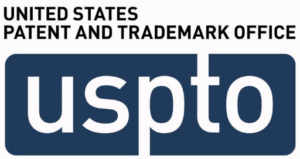Does USPTO Memo on Patent Eligibility Bring Confusion?
Jul 17th, 2018 by David Puleo | Patent Related Court Rulings | Patent Trends & Activity |
 In April, the USPTO published a memorandum that revises procedures set forth in MPEP §2106.05. The memorandum was issued in response to the Federal Circuit’s decision in Berkheimer v. HP Inc. Now that the Federal Circuit denied the request for en banc rehearing of the decision, we thought it would be a good time to offer some thoughts on the memo.
In April, the USPTO published a memorandum that revises procedures set forth in MPEP §2106.05. The memorandum was issued in response to the Federal Circuit’s decision in Berkheimer v. HP Inc. Now that the Federal Circuit denied the request for en banc rehearing of the decision, we thought it would be a good time to offer some thoughts on the memo.
As a refresher, subject matter eligibility is determined by employing the two-part Mayo/Alice Test, which is used to determine (1) whether patent claims are directed to a patent-ineligible concept, and if not, (2) whether the claim’s elements transform the nature of the claims into a patent-eligible application. Along with Aatrix Software, Inc. v. Green Shades Software, Inc., for which a request for en banc rehearing was also denied by the CAFC, Berkheimer calls into question Step 2 of the Test, specifically whether an invention is “well-understood, routine, and conventional.” Although subject matter eligibility is ultimately a question of law, whether a factual inquiry needs to be performed to determine patent subject matter eligibility under 35 U.S.C. 101 is still a question.
The memorandum addresses changes to Step 2, specifically that “an additional element (or combination of elements) is not well-understood, routine or conventional unless the examiner finds, and expressly supports a rejection in writing”. Furthermore, “if an applicant challenges the examiner’s position that the additional element(s) is well-understood, routine, conventional activity, the examiner should reevaluate whether it is readily apparent that the additional elements are in actuality well-understood, routine, and conventional activities”.
Despite the attempt by the USPTO to provide guidance for the examining corps, the memo may be adding to the confusion. The memo frequently addresses and compares the new 101 analyses to those performed in other statutes relating to questions of patentability. Although the USPTO clarifies that this analysis is the same as that performed to satisfy 35 U.S.C. 112 and that the question of factual inquiry is distinct from novelty and obviousness under 35 U.S.C 102 and 103, respectively, it is possible that examiners might be tempted to think of a 101 inquiry along the same lines as 102, 103, 112. Given that examiners have often unwittingly included 102, 103, and 112 arguments into a 101 rejection, it is possible that the 101 memo might further this confusion.
Although we hope that this memo would add clarity to the 101 issue, it is likely that more clarifications will be necessary, particularly now that Berkheimer will not be reheard by the Federal Circuit. The denial of the Berkheimer rehearing request is also affecting other cases. Specifically, the CAFC is being asked to vacate some PTAB decisions and remand them to the USPTO for further consideration. Also, given the statements directed to Congress by Federal Circuit Judges Lourie and Newman, the need to clarify our eligibility laws will require further action by the Congress and the Supreme Court.
–David Puleo and Anthony D. Sabatelli, PhD, JD
This article is for informational purposes, is not intended to constitute legal advice, and may be considered advertising under applicable state laws. The opinions expressed in this article are those of the author only and are not necessarily shared by Dilworth IP, its other attorneys, agents, or staff, or its clients.

